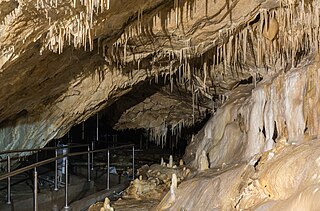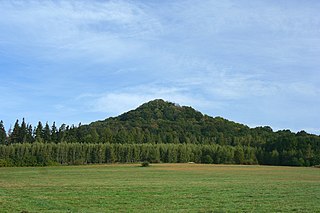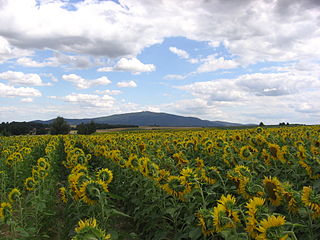 W
WThe Golden Mountains are a mountain range in the Sudetes on the border between Poland and the Czech Republic. Various ores were mined here from the 13th to the 20th century, including gold, hence the name Golden Mountains. There is a gold mine open to the public in Złoty Stok. It is the wildest, least civilized and least visited mountain range in Poland.
 W
WJaskinia Niedźwiedzia is the longest cave in the Śnieżnik Mountains, which are part of the Sudety mountains. It was discovered in 1966, near the village of Kletno in Poland. It is famous for its many excavations of the cave bear.
 W
WJelenia Góra Valley in Poland is a big valley at the Silesian northern side of the Western Sudetes and next to Kłodzko Valley the largest intermontane basin of the Sudetes. It is situated at an altitude of 250–400 meters above sea level and covers an area of 273 km2. In the 19th century, the lovely landscape attracted the Prussian high nobility, which built magnificent palaces, manors and parks. The enormous number of stately homes turned the valley into one of the most important garden landscapes in Middle Europe.
 W
WKrálický Sněžník or Śnieżnik Kłodzki is a mountain in Eastern Bohemia, located on the border between the Czech Republic and Poland. The name Sněžník or Śnieżnik derives from the word for "snow"; the mountain has snow cover for up to eight months a year. In Czech the adjective Králický is added to distinguish it from the mountain called Děčínský Sněžník. An alternative Polish name is Śnieżnik Kłodzki, from the town of Kłodzko. In German the mountain is known as Glatzer Schneeberg, Grulicher Schneeberg, or Spieglitzer Schneeberg.
 W
WOstrzyca is forested hill in southwestern Poland. The hill has a conical shape and is an extinct and eroded volcano that was active in the Neogene period. More specifically the volcano is a volcanic neck made of basalt. The geology around the hill is composed of sandstone and conglomerate of Permian age. The hill is protected by a nature reserve since 1962.
 W
WThe Ślęża is a mountain in the Sudeten Foreland in Lower Silesia, 30 km (19 mi) from Wrocław, southern Poland. This nature reserve built mostly of granite is 718 m high and covered with forests.
 W
WThe Trzebnickie Hills is a mountain range in southwestern Poland. It is named after the town of Trzebnica on the northern slope.